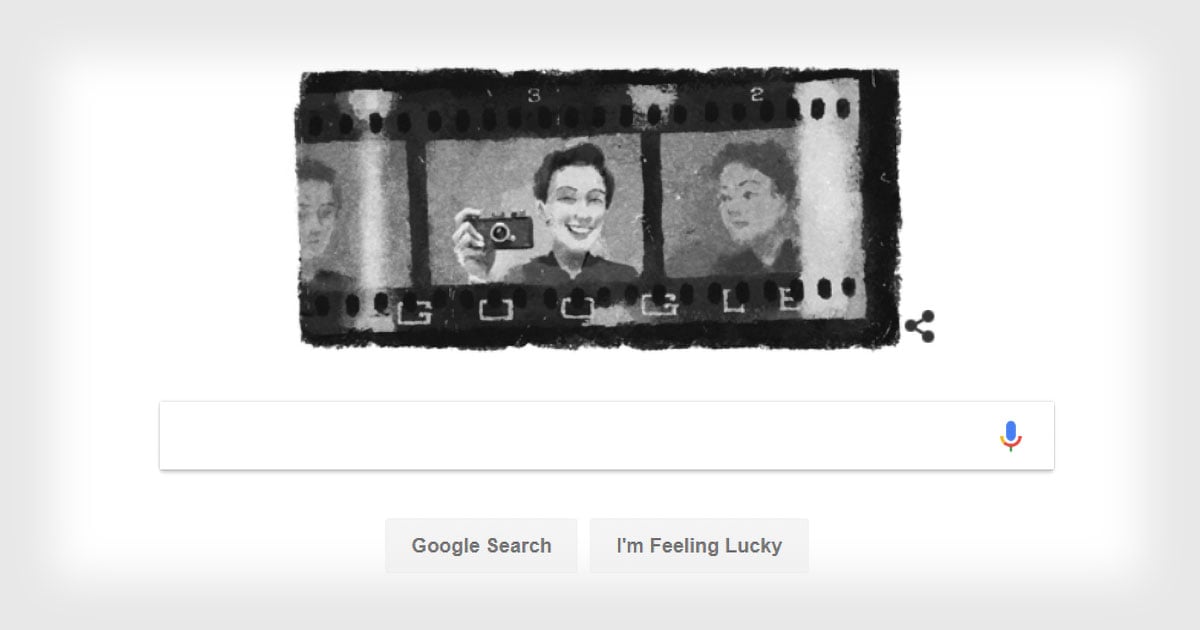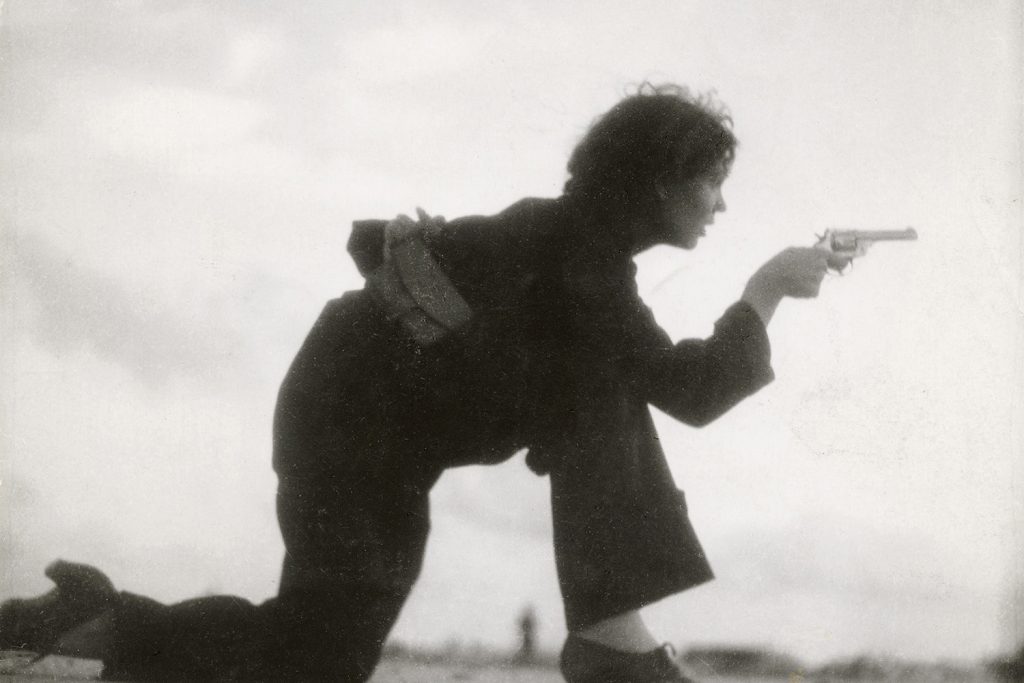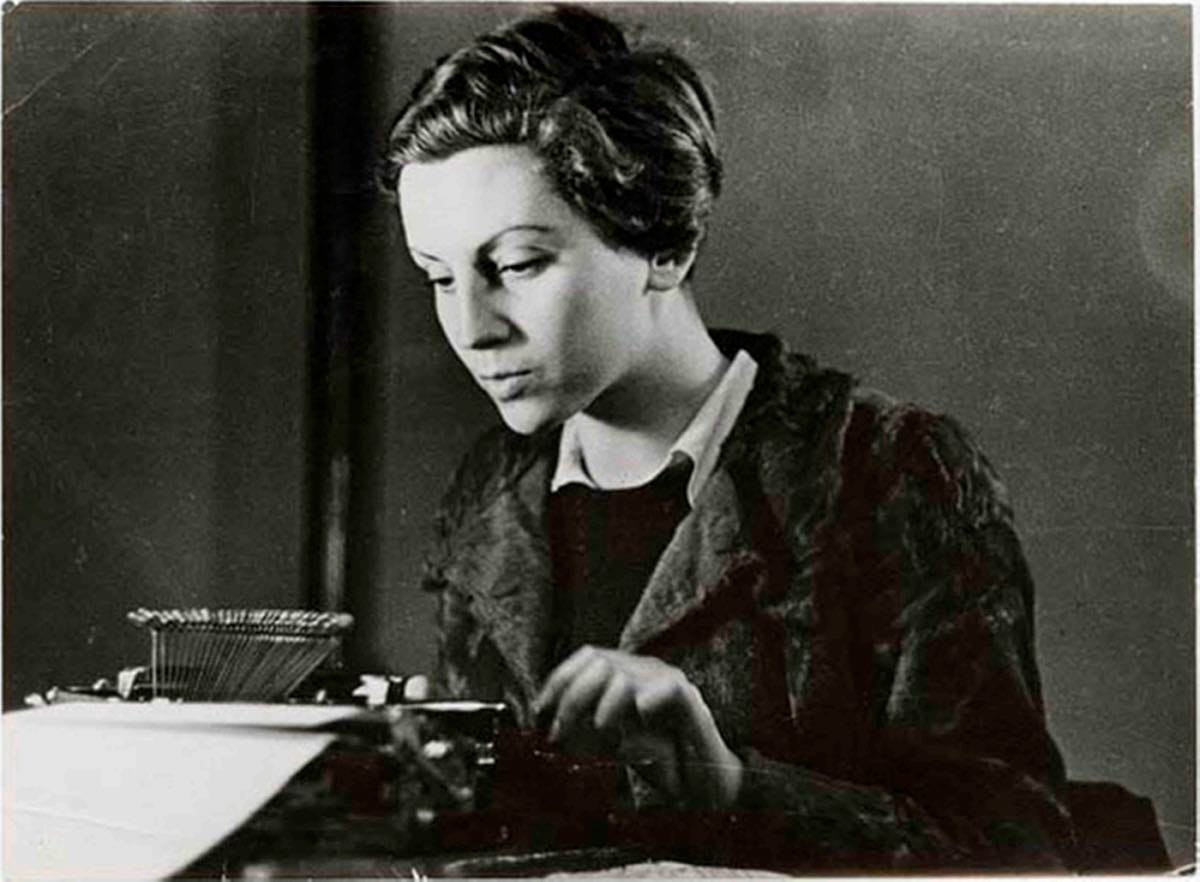The tale begins in Paris in 1935, according to Variety, and will be a “snapshot of a torrid two-year romance with Gerda Taro during the Spanish Civil War.” According to Fortes’ novel, Taro and Capa, both refugees fleeing the Nazis, had the shared intention when they met of becoming photographers and that the outbreak of the Spanish Civil War a year later gave them their big opportunity.
Tag: Gerda Taro
-
NPPA: Robert Capa, The Action Film?
-

Google’s Latest Doodle Honors War Photographer Gerda Taro
Google’s Latest Doodle Honors War Photographer Gerda Taro
Google’s latest homepage Doodle is a tribute to the late war photographer Gerda Taro, who would have turned 108 today. Taro was the woman who invented
via PetaPixel: https://petapixel.com/2018/08/01/the-latest-google-doogle-honors-war-photographer-gerda-taro/
“Though she was tiny in stature, Gerda Taro had the heart of a giant,” Google writes. “Known as ‘the little red fox,’ the ginger-haired photographer fearlessly turned her camera lens to capture sensitive and critical images of conflict around the world, producing powerful black-and-white images that informed readers of the newspaper Ce Soir.
-

When Women Photographers Went to War
When Women Photographers Went to War
From Gerda Taro to Susan Meiselas, a new book examines the ways eight women have expanded the field of war photography.
via Aperture Foundation NY: https://aperture.org/blog/women-war-photography/
From Gerda Taro to Susan Meiselas, a new book examines the ways eight women have expanded the field of war photography.
-

The Woman Who Was Robert Capa – Vantage – Medium
The Woman Who Was Robert Capa
Gerda Taro didn’t just help invent one of the world’s most famous photographers. Briefly, she was him.
via Medium: https://medium.com/vantage/the-woman-who-was-robert-capa-12f567f13a91
Gerda Taro didn’t just help invent one of the world’s most famous photographers. Briefly, she was him.
-
Le Monde: Robert Capa’s War Chest

Link: Le Monde: Robert Capa’s War Chest | Le Journal de la Photographie
They were thought to be lost forever. After an incredible journey, 4500 negatives from the legendary photojournalist Robert Capa and his friends Gerda Taro and David ‘Chim’ Seymour, resurfaced in New York in 2008
-

Tales of The Mexican Suitcase
LightBox | Time
Read the latest stories about LightBox on Time
via Time: http://lightbox.time.com/2011/08/26/the-mexican-suitcase/#1
Now a documentary about the find, The Mexican Suitcase by director Trisha Ziff, expands on ICP’s recent exhibition on the negatives. The film showcases the photos and the photojournalists’ work during Spain’s civil war– a battle between communist and fascist that began in 1936 with a failed coup, and killed half a million people before General Franco won control in 1939– and the continuing struggle to come to terms with the country’s painful history.
-
Robert Capa's Spain, Inside a Suitcase – NYTimes.com
In “Images of War, Finally Unpacked,” Holland Cotter reviews an exhibition called “The Mexican Suitcase” at the International Center of Photography in New York, which documents wartime life in Spain between 1936 and 1939 through the eyes of three photographers — Robert Capa, Gerda Taro and David Seymour (Chim) — in images no one seems to have seen for more than a half century.
-

Spanish Civil War Trove at Center of Photography – NYTimes.com
Images of War, Finally Unpacked
“The Mexican Suitcase” at the International Center of Photography features recently recovered images of the Spanish Civil War by Robert Capa, Gerda Taro and David Seymour.
Link: http://www.nytimes.com/2010/09/24/arts/design/24suitcase.html?_r=1&partner=rss&emc=rss
After all these years I’ve found some answers to my question in an exhibition called “The Mexican Suitcase” at the International Center of Photography. The show documents wartime life in Spain between 1936 and 1939 from an insider-outsider vantage: through the eyes of three photographers — Robert Capa, Gerda Taro and David Seymour, known as Chim — who were not Spanish but who were intensely committed to what they saw as a do-or-die anti-fascist struggle.
-
New Photographs by Robert Capa, Gerda Taro and David Seymour Are Found in a Suitcase

When the three weathered cardboard boxes — known collectively, and cinematically, as the Mexican suitcase — arrived at the International Center of Photography more than a year ago, one of the first things a conservator did was bend down and sniff the film coiled inside, fearful of a telltale acrid odor, a sign of nitrate decay.
But the rolls turned out to be in remarkably good shape despite being almost untouched for 70 years. And so began a painstaking process of unfurling, scanning and trying to make sense of some 4,300 negatives taken by Robert Capa, Gerda Taro and David Seymour during the Spanish Civil War, groundbreaking work that was long thought to be lost but resurfaced several years ago in Mexico City.
-
Inside The Mexican Suitcase

Robert Capa’s “Mexican Suitcase,” actually three flimsy cardboard valises containing thousands of negatives of pictures that Capa and others took during the Spanish Civil War before he fled Europe for America in 1939, has now been opened.
via dvafoto
.
-
Robert Capa – Lost Negatives – Art – New York Times

TO the small group of photography experts aware of its existence, it was known simply as “the Mexican suitcase.” And in the pantheon of lost modern cultural treasures, it was surrounded by the same mythical aura as Hemingway’s early manuscripts, which vanished from a train station in 1922.
The suitcase — actually three flimsy cardboard valises — contained thousands of negatives of pictures that Robert Capa, one of the pioneers of modern war photography, took during the Spanish Civil War before he fled Europe for America in 1939, leaving behind the contents of his Paris darkroom.
Capa assumed that the work had been lost during the Nazi invasion, and he died in 1954 on assignment in Vietnam still thinking so. But in 1995 word began to spread that the negatives had somehow survived, after taking a journey worthy of a John le Carré novel: Paris to Marseille and then, in the hands of a Mexican general and
Check it out here.

